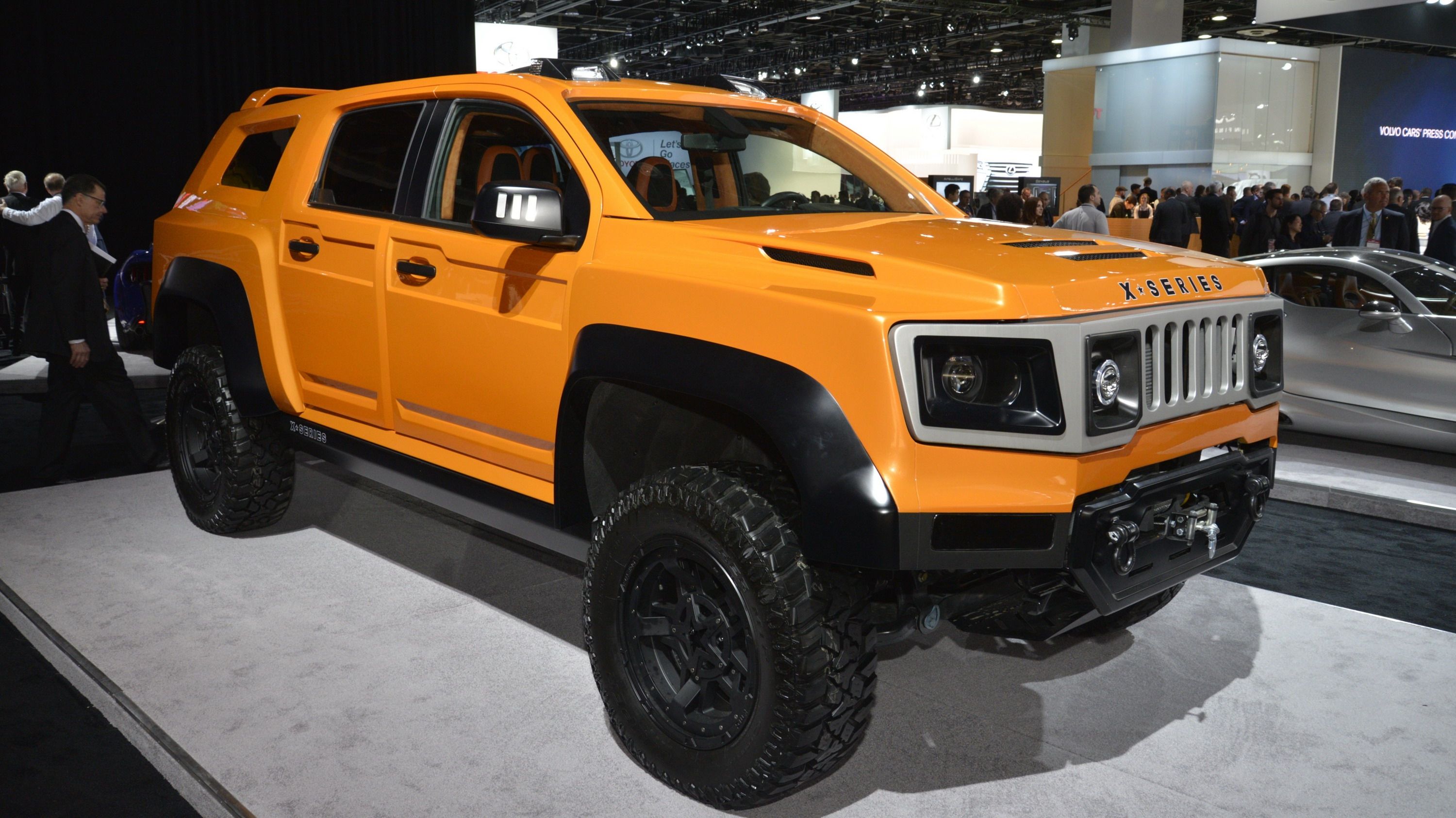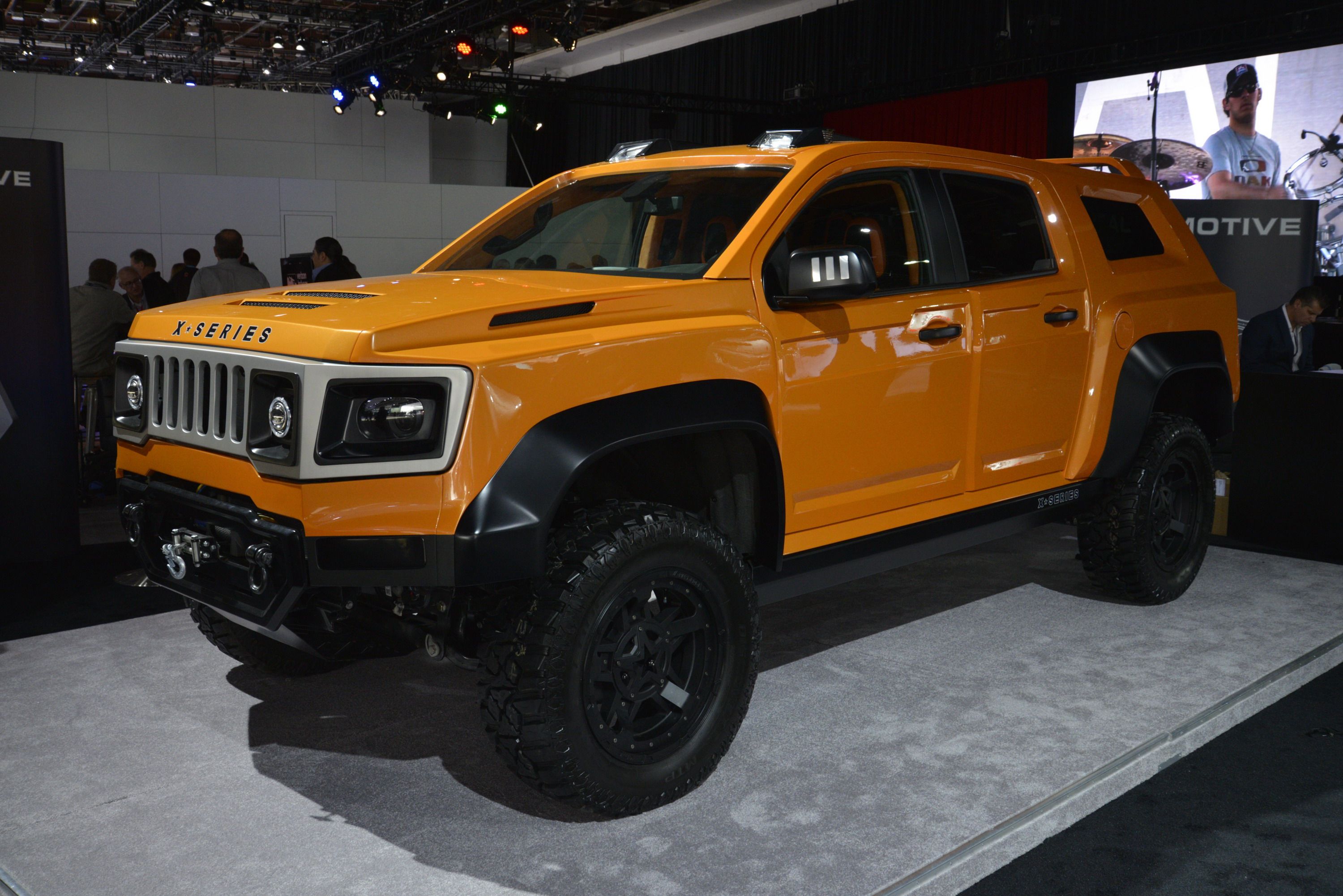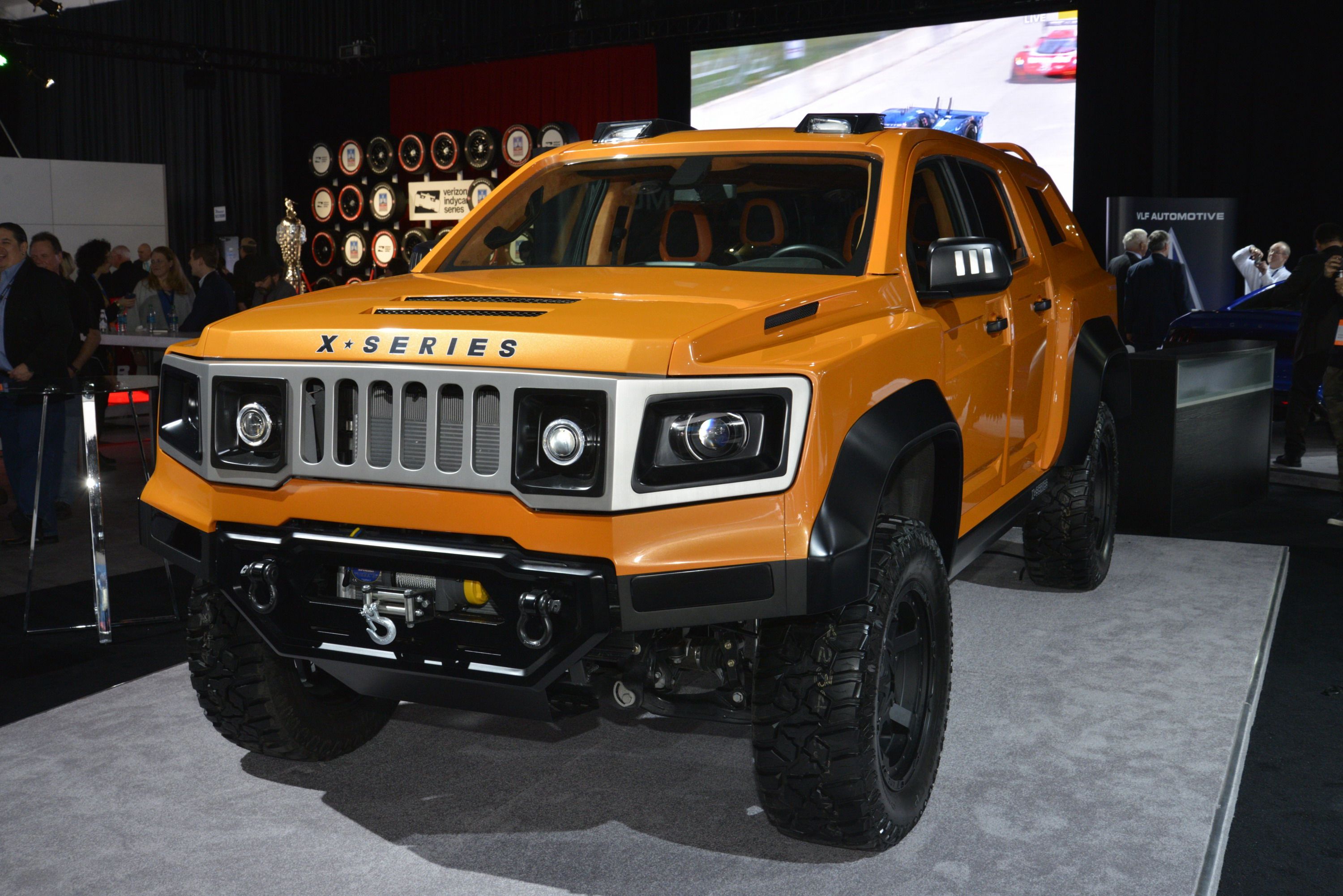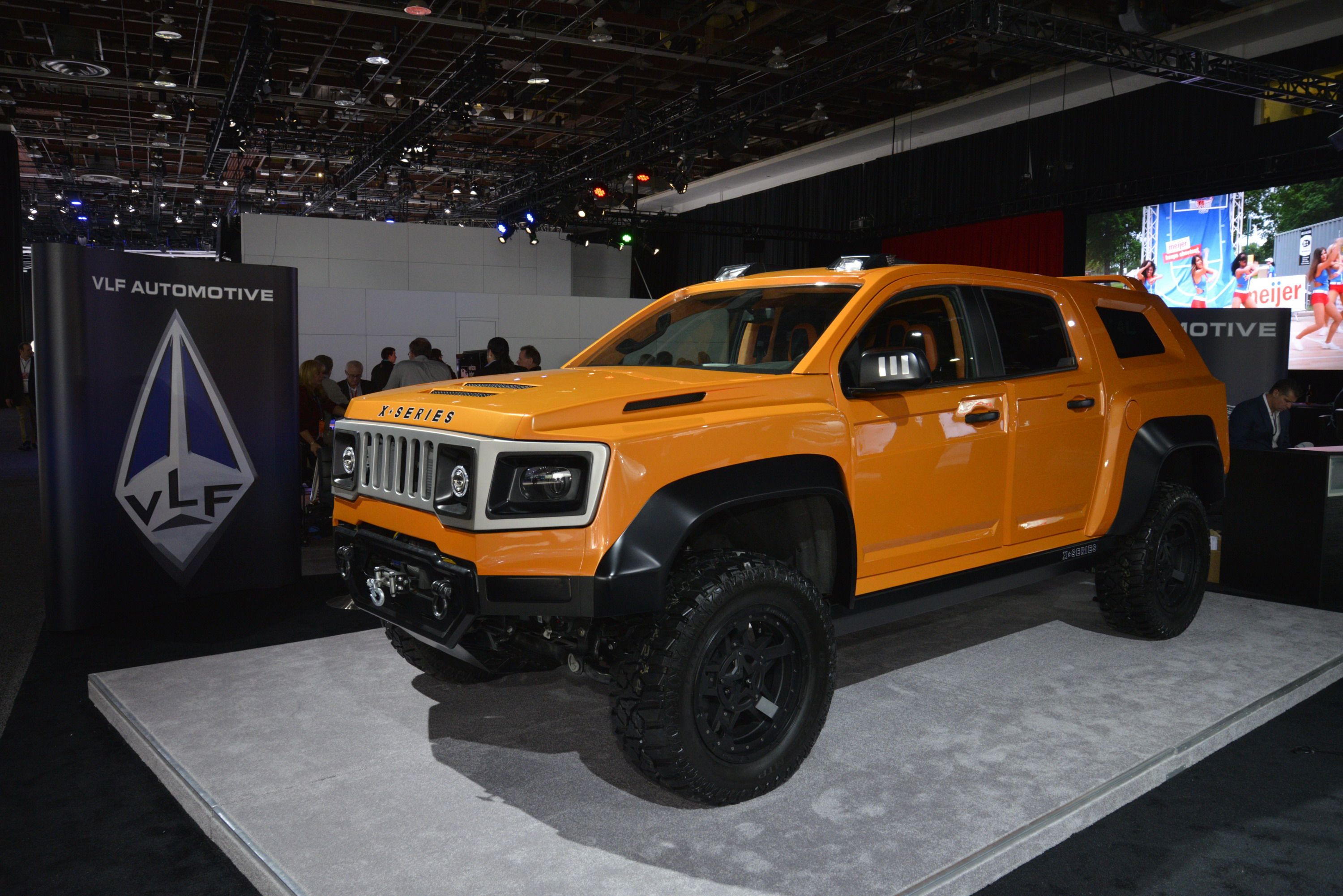If I told you that the 2017 North American International Auto Show would play host to one of the most confusing concept offerings of the year, it wouldn’t be too much of a stretch, right? Well, I don’t exactly know what VLF Automotive was thinking here, but rest assured, the X-Series Concept has that spot all to itself.
We admittedly didn’t know too much about the concept when we first saw the monstrosity in Detroit, but more details about the X-Series have since come to light and but very little of it still looks and sounds right to us, proving once and for all that just because you have the capacity to build and develop an automotive prototype, that doesn’t mean you should do it if it’s going to end up looking like this.
To be fair, the X-Series does have a few notable qualities about it, even though the use of the word “few” is a stretch in itself. It’s actually based on the Chevrolet Colorado and has the pickup’s stock 3.6-liter V-6 engine that’s good for 306 horsepower and 275 pound-feet of torque. It has a ground clearance of 11.5 inches and departure angles of 44.7 and 48 degrees, respectively. That tells you that the X-Series is a vehicle you’d like to have in case there are natural calamities like floods in your locale. But other than that, the X-Series is a complete waste of time, deserving at least of being named one of the worst debuts in Detroit.
You don’t need to be deeply entrenched in the auto industry to know that the design of the X-Series is largely inspired by the Hummer H2, the gas-guzzling marauder of an SUV that actually gained popularity a decade ago before meeting its demise in 2010 because, well, it just sucked in so many ways. Apparently, the people behind VLF Automotive didn’t get that memo, not to mention the current roadmap of the auto industry that’s embracing the idea of alternative energy sources like never before.
Speaking of which, it comes as a great surprise that the X-Series actually comes from a company backed by Henrik Fisker, the same individual who penned beauties like the BMW Z8 and the Aston Martin Vantage and was the driving force behind the Fisker Karma, one of the industry’s first full-fledged premium-plug in range-extended electric luxury sports sedan. For him to go from all of that to the VLF Automotive X-Series is a huge head-scratcher, to say the least.
Continue after the jump to read the full story.
The absurdity of the X-Series really is something else
I have often wondered about the development process of concept vehicles like the VLF Automotive X-Series. Obviously, something like this had to have been planned out at some point. There may have even been some arguments on how to proceed with designing the rebuilding process from the Chevrolet Colorado to the X-Series. With that in mind, I wonder if at some point through that presumably laborious ordeal did somebody raise his hands in despair and object to what was being created in front of him. If there was ever somebody from VLF Automotive who did just that, he deserves a freaking medal.
That’s how bad the X-Series and if you’re wondering if I’m just throwing shade at the concept for the purpose of throwing shade, I invite you to take a look at it. The front-end alone is hideous. Look at those headlights, for instance. They’re abnormally close to one another that they make the car look cross-eyed. The Hummer inspiration is clearly there, but it still doesn’t remove the notion that the whole vehicle was cheaply done with little foresight on what it could turn into. Well, it turned into something that even some of China’s artisan knock-off artists would scoff at.
The whole thing is just a mess, which in itself is a surprise considering that VLF Automotive, while not exactly the purveyors of avant garde automotive styling, has shown some potential in the past with their previous prototype offerings. The Dodge Viper-based Force 1 wasn’t appealing itself, but at least it had some nice touches. And for what it’s worth, the Fisker Karma-based Destino actually looked solid.
But the X-Series just burned all that good will down and it’s going to be hard to take VLF Automotive seriously from now one. And just so everybody knows, the automaker is actually planning to produce 250 units of the vehicle a year at a cost of $70,000 a unit. Fortunately, none of the models will be sold in the US as the company appears to be more inclined to offer it in other markets, namely Asia and the Middle East. Hey, at least VLF Automotive got that part right.




